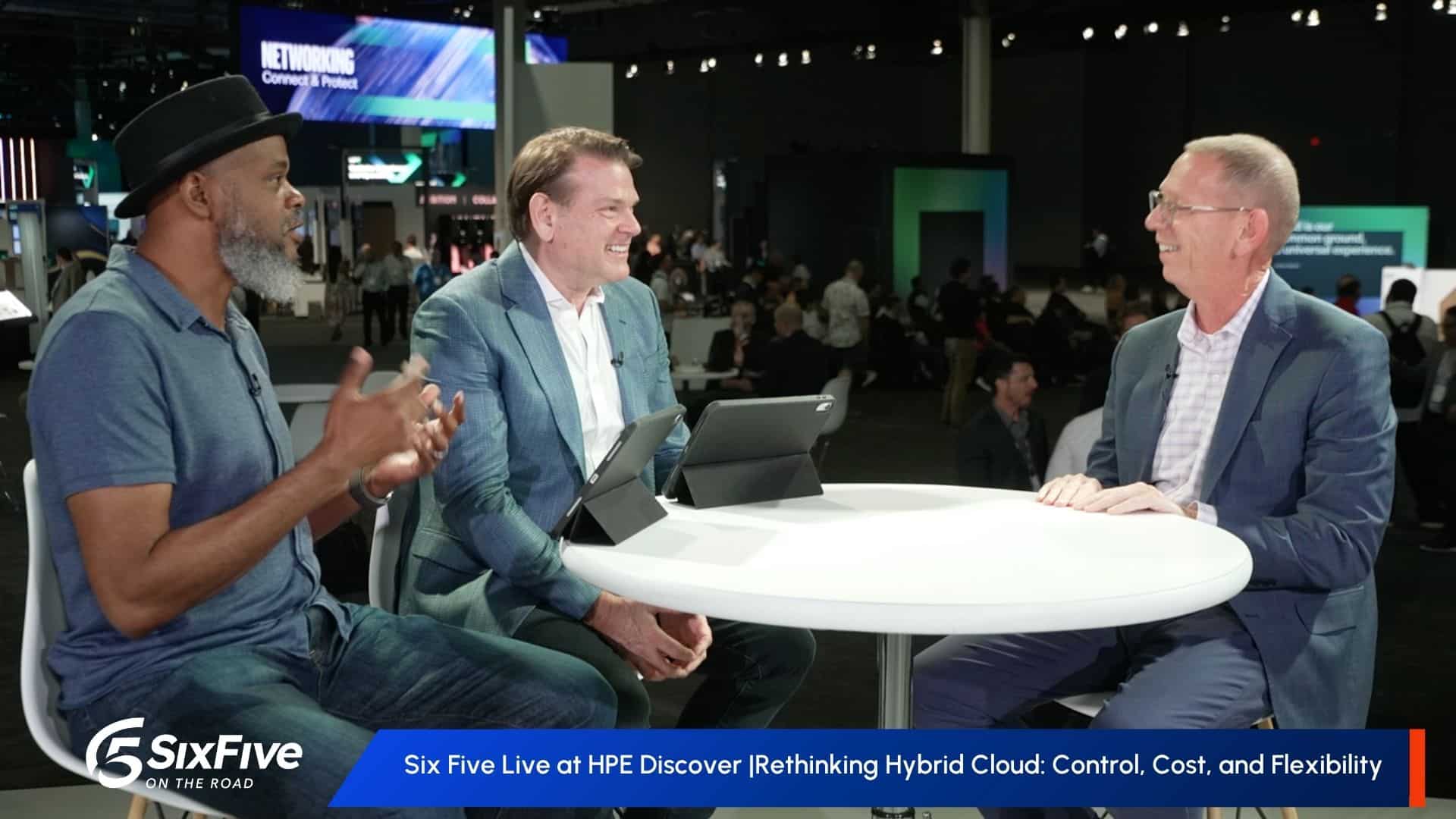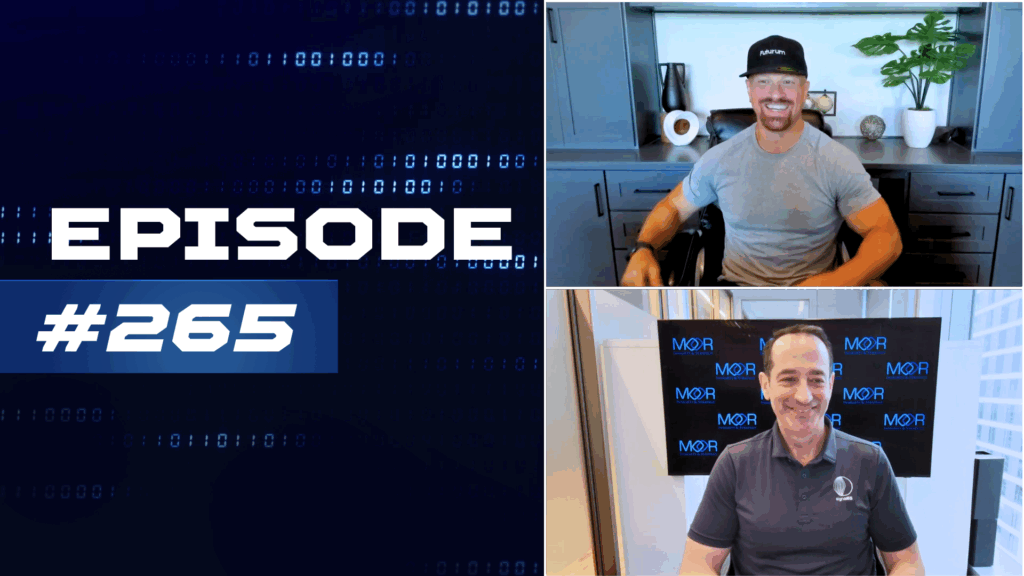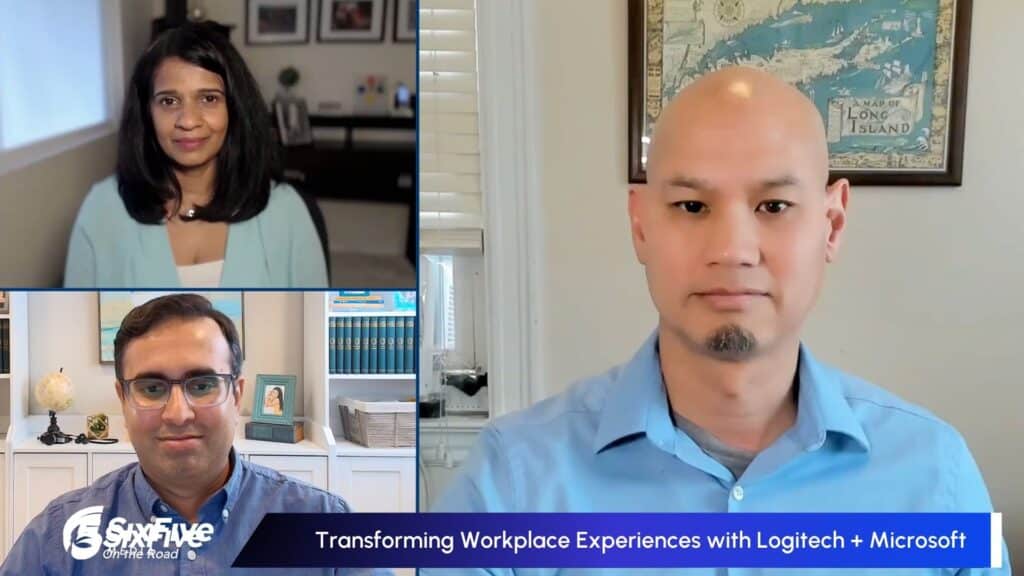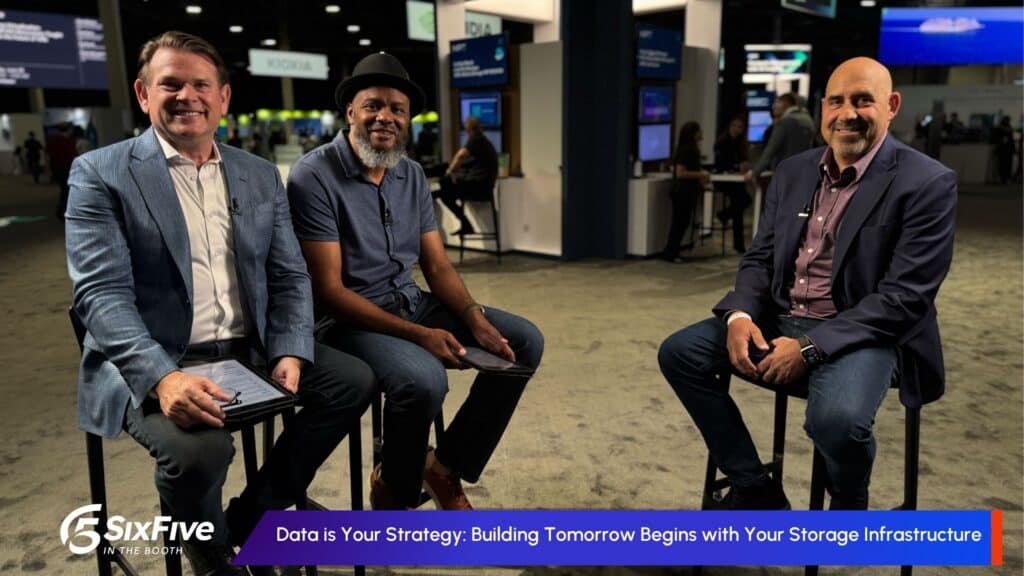How is HPE reshaping the architecture of hybrid cloud? ☁️
From HPE Discover Las Vegas 2025, David Nicholson, Keith Townsend, and Matt Kimball discuss how Hewlett Packard Enterprise is evolving its hybrid cloud offerings. This compelling analysis provides insightful reactions to HPE’s keynote and takes a close look at this year’s theme of Rethinking Hybrid Cloud.
Key takeaways include:
HPE’s Evolving Cloud Stance: HPE has strategically shifted & expanded its hybrid cloud approach, building directly upon the foundational announcements from Antonio Neri’s keynote address.
The Unified Private Cloud Imperative: Examining HPE’s Unified Private Cloud announcement and its far-reaching implications for the future landscape of hybrid cloud architectures.
Validating Simplified Hybrid Management: A critical assessment of HPE’s propositions regarding streamlined hybrid cloud management, scrutinizing whether the latest offerings genuinely substantiate this core promise.
Driving Hybrid Infrastructure Adoption: Insights into the primary factors compelling enterprises towards hybrid infrastructure models, highlighting key decision points for IT leaders shaping their infrastructure and cloud strategies post-Discover.
Learn more at HPE.
Watch the full video at Six Five Media, and be sure to subscribe to our YouTube channel, so you never miss an episode.
Or listen to the audio here:
Disclaimer: Six Five On The Road is for information and entertainment purposes only. Over the course of this webcast, we may talk about companies that are publicly traded, and we may even reference that fact and their equity share price, but please do not take anything that we say as a recommendation about what you should do with your investment dollars. We are not investment advisors, and we ask that you do not treat us as such.
Transcript:
Keith Townsend: HPE Discover Las Vegas 2025. Dave Nicholson. Matt Kimball, VP and Principal Analyst, Data Center at Moor Insights and Strategy.
Matt Kimball: That sounds impressive.
David Nicholson: Yeah, very impressive.
Matt Kimball: Who is that guy?
Keith Townsend: More impressive. Welcome to the hybrid Cloud Store show at HPE Discover.
Matt Kimball: And I am surrounded by geniuses. And we’re going to play incredible talent here.
David Nicholson: We’re going to play Stump the chump here.
Matt Kimball: Oh, man. Well, I’m the chump, so.
David Nicholson: That’s an honor.
Keith Townsend: So, Matt, first off, you said it in the warmup, the great VM Reset.
Matt Kimball: The great VM Reset, yeah. Antonio brought that up in his keynote. So I’ll ask, you know, kind of throw this out, see if you all agree with me.
David Nicholson: No, we’re interviewing you, Matt.
Matt Kimball: You caught on to my table. It’s interesting to me. Right. And Keith, we’ve talked about this at other conferences and in the past as well. There’s all this turmoil going on in the market, Right. You’ve got this company. I don’t know if your viewers know that VMware got acquired by Broadcom. Oh, I know. Who would have thunk, right?
Keith Townsend: They talked about another hypervisor company. Do you think that was who Antonio was referring to?
David Nicholson: No, I think you’re mistaken, Matt. He was referring to traditional hypervisors.
Matt Kimball: Oh, that’s right.
David Nicholson: Traditional Trad hype. Trad hype for short.
Matt Kimball:. Yeah. And there’s a lot of turmoil. And it’s funny, we were in a roundtable discussion just yesterday talking to a lot of CIOs, IT directors. Who’s using VMware, who’s considering or exploring options. Every single hand went up. Right? It’s cost.It’s cost. It’s cost and it’s uncertain. It’s long term. Where’s this thing going? And it’s proprietary, Right. Everything is closed off. What it is looking for is that more open virtualization solution, a virtualization solution that’s not going to cut. That’s not going to be deployed at the cost of other technologies across the enterprise. And a virtualization solution and a cloud solution that you can grow with. And so that’s where I think HPE is coming in and where Antonio’s coming in with the great VM reset. Everybody is looking for an alternative. Do you want me to keep going or you guys want to jump in?
David Nicholson: I just wonder. I mean, kind of jokingly, I’ve said a few times that if you’re a CIO and your CEO asks you what your AI strategy is and you say, I think I’m going to switch hypervisors, you’re fired. Okay. Because that’s below the line in terms of what anybody cares about. So I think if HPE is going to lead with it’s the great VM reset, forget about that. Yeah, sure, it’s good messaging to say that they have a solution for that. I think that’s going to come along with people focusing on AI and hybrid cloud, the ability to do things like run inference on premises and stuff like that. So maybe a little nuance to it. I don’t know how many people it’s going to capture. And yeah, everybody says they want to move, but the numbers show that not as many as both of us would have agreed would have happened by now.
Matt Kimball: Well, I think there’s a counter to that and that is I am an enterprise IT organization. I have 20,000 VMs supporting my business. I have built muscle memory around this thing that has become the control plane for my data center. And there is no way I can move off of that thing in six months time. It is a longer term project. So I am going to extend a license here and I am going to plan and execute a migration strategy over here. Here’s the thing. And this ties into AI before you can do anything. This is my Matt Kimball’s opinion, right? Not others. I think before you as an enterprise can even think about AI, you’ve got to think about modernizing your organization, your enterprise in your IT operations. There’s three parts to that. There’s people, there’s process or operations and there’s product, there’s technology and they’re all intertwined. People are the long tent on the pole, right? It’s cultural, it’s education, it’s everything. But that starts in the product, right? And product influences operations and operations influences people. So I think there are three legs to that stool. But I think before you can even get to AI, you gotta start thinking about your organization from a modernization perspective. And that’s where hybrid cloud come in. By the way, let’s remember, AI is not the only workload in the data center, right? It is one of many, many workloads that exist. And yes, I want to make it easier to deploy or deploy and activate or operationalize AI across my organization, but I also want to support every other function that’s going on. And I want to reduce cost, I want to reduce power and I want to be able to take all of that excess and put it to higher value projects such as how I deploy agentic AI for this workflow or generative AI for this chatbot or whatever it might be. So.
Keith Townsend: People were just clapping in the background for that. One of the things I like to console CIO’s CTOS Architects on is not changing too much at once. Sure, you want to fail any project, I don’t care. If you’re talking about AI, ERP really doesn’t matter. Too much change in the enterprise at one time will lead to failure. So as people are looking at the big VM reset, they’re looking at hybrid cloud adoption from a people and process perspective. They’re looking at AI governance and adopting AI. How are you looking at this, this, this yarn of problem and saying enterprise leaders and enterprise vendors should focus on X. What is X?
Matt Kimball: Yeah. So outcomes for me and I go back to when I was in IT and I was never a good practitioner, so I kind of failed upward and I became a very good executive, but not a good practitioner. But my mantra is always start at the right. I think I mentioned this in our pre show, start at the right and work left. Right. What are your outcomes? What are you trying to achieve? And work back from there?
David Nicholson: Which by the way, headline HPE, they call that ambition. What is your ambition?
Matt Kimball: Yeah, right, yeah. What is.
David Nicholson: Yes, it’s critically important. I’m sorry.
Matt Kimball: No, that’s great. Work backwards. And to what you’re saying, Keith, you got to break that down into smaller consumable bites that fail fast. Right. And fail fiercely. Right. Don’t be afraid to fail. But you have to engage, you have to embark on these projects in a way where when those mistakes happen, and they’re going to happen, they happen in every IT project I’ve been a part of. Right. Failure happens. It’s not bringing down your ERP system, it’s not bringing down the mission critical apps and workloads that are powering your enterprise. Right. So think small. Look for those early victories, you know, map it out. I always say there are two kinds of vectors. There’s visibility and there’s import to the company. Right. There’s the stuff that every executive’s got their eyes on. And then there’s the stuff that really matters to the company. Find that right balance where it’s going to have the right amount of eyes on it, but it’s not going to bring the company to its knees or your organization to its knees. You know, when those failures happen that way you get those early wins because here’s. And you’ve been in it. You’ve been in IT or IT Consulting, right? Here’s what happens. You start these projects, six months later, funding goes away. Right. I mean, it’s probably happened in your life, right?
David Nicholson: Yes, yeah, yeah. I owned a landscaping company until two weeks ago. So I. Yeah, I’m not sure what I’m doing here. I’m not even sure what I’m doing here. But, you know, hybrid cloud has had a history, I would argue, and coming from, you know, the infrastructure side of things. We started talking about hybrid cloud because we were terrified of cloud killing us.
Matt Kimball: Cloud, sure.
David Nicholson: And so we said, hold on a second. Yeah, I know. We called that a science project. Ticker toys. Stay away from it. Now, we admit it’s ready for some of your enterprise workloads, but at least let us have some. Yeah, at least long enough for us to retire, maybe.
Matt Kimball: Yeah, sure.
David Nicholson: That was the hope. And I’d say there were some dark days of hybrid cloud where we talked about things like cloud bursting. Hey, you know, on the 11th of every month, let’s move a petabyte of data into the cloud. And it’s like, no, that’s never going to happen.
Keith Townsend: I’m old enough to remember HPHP now. HPE bought eucalyptus.
David Nicholson: Yes, right, right, right, yes. So now here we are, jump forward and oh, my. Hybrid clouds make a lot of sense. Not for the least of reasons, because people are concerned about their crown jewels, their data, they just got over the idea that storing their data in the cloud was actually safer than in their own data center. Because psychologically that doesn’t make sense. But then it’s like, okay, yeah, I admit it, Google or whoever is better at storing my data than I am, but inferencing it, training a model with it, no way.
Matt Kimball: Right.
David Nicholson: So people want to do that on premises. Therefore on premises stuff remains. Yet people are already sold on the benefits cloud. So hybrid cloud, here to stay. Keith. Keith knew it forever. But almost by happenstance. So against that backdrop, kind of the.
Matt Kimball: Killer app, if you will. Right?
David Nicholson: I believe it is. I believe it is against that backdrop. Do you think that’s enough of an incentive to get leaders in a company, to allow IT leaders in the company?
Matt Kimball: Yeah.
David Nicholson: To do technology refresh at the infrastructure level, which we all know prepares you for AI, but it doesn’t look like AI on day one.
Matt Kimball: Right, right.
David Nicholson: And is it a fair argument to say that if they do that they’ll free up capital to do the shiny object AI stuff. Do you see that resonating as a, as a valid argument?
Matt Kimball: It’s an absolutely valid argument. The question is this whole. Is it possible for Keith Townsend, CIO extraordinaire or IT director to convince the C suite that that is a worthwhile investment? It’s the absolute necessity to get to that end state. You know, that kind of nirvana, which is agentic AI running the enterprise and everybody’s just sitting around and, you know, drinking lemonade and eating oatmeal cookies and saying, life is going great. Right. The question is, how do you get there and how do you, how do you convince executives? This goes back to. And this is part of the problem. We’ve spent forever, and I was an IT vendor, I was on the IT vendor side as well. We spent forever talking about TCO, talking about ROI, talking about these savings that will be realized. We promise that we never go back and validate or never go back and quantify after the fact. Right. So you, you. So I think there’s a little skepticism that goes along with going to a board that’s kind of controlling governance, a control board that is looking at IT expenses and operations or projects and saying yay, verily, move forward or don’t. Right? That’s part of the challenge that some of the ways that I would sell IT projects in the past were on the early side and we never went back and proved them.
So when you say, I’m gonna save you x percent of dollars by doing this project, people look at it with skepticism. But there are real hard savings, or by hard, I don’t mean difficult, I mean concrete savings that you achieve when you look at IT infrastructure. In that roundtable we were at yesterday, there’s a gentleman who has a bunch of HPE servers. They’re between five and eight years old. He’s getting ready to refresh them and he’s saying, we’re going to do a 12 to 1 consolidation ratio. Holy heck. How much capital does that save me? How much from licensing is that going to save me if I’m using HPE virtualization stack, how much is that going to save on power and cooling? I mean, there are a lot of elements that go into this that are real, real concrete, and I think it’s more demonstrable today than maybe it has been in the past. So I think you’ve got to build that package and go to. In Florida, we call it the technology review work group, go to the TRW and you got to sell the stuff and you’ve got to. And it helps to have the vendor behind you with those numbers. I think HPE actually did a great job of showing what those savings could be.
Keith Townsend: Yeah. One of my more popular takes has been this blue money versus green money. Like when a vendor comes into your office and says you’re we’ll save you $100,000. And I go to my CFO and I say, we saved $100,000, he’s going to say, well, did you release those funds back? And if you did not, you did not save me $100,000.
Matt Kimball: Yeah.
Keith Townsend: And this is, you know, this is the great debate, right. We are challenged. Some of the same people who are going to be implementing the big VM reset are the same people doing my AI projects.
Matt Kimball: Yes.
Keith Townsend: And we could go on for easily the rest of the show talking about this problem, because this is the problem. We talked to your colleague Will Townsend about networking, which is the glue to all of this. But we’ve run out of time.
David Nicholson: Me, even wanting more.
Keith Townsend: So we did not stump the chump.
Matt Kimball: No, you did not.
David Nicholson: We failed to.
Keith Townsend: So for my co host, Dave Nicholson, Matt, thank you for joining us. Fabulous conversation as always, folks. You got a sneak peek on the types of conversations that the three of us have all the time. We’re going to continue these conversations. Stay tuned for more Six Five coverage.
Author Information
David Nicholson is Chief Research Officer at The Futurum Group, a host and contributor for Six Five Media, and an Instructor and Success Coach at Wharton’s CTO and Digital Transformation academies, out of the University of Pennsylvania’s Wharton School of Business’s Arresty Institute for Executive Education.
David interprets the world of Information Technology from the perspective of a Chief Technology Officer mindset, answering the question, “How is the latest technology best leveraged in service of an organization’s mission?” This is the subject of much of his advisory work with clients, as well as his academic focus.
Prior to joining The Futurum Group, David held technical leadership positions at EMC, Oracle, and Dell. He is also the founder of DNA Consulting, providing actionable insights to a wide variety of clients seeking to better understand the intersection of technology and business.
Keith Townsend is a technology management consultant with more than 20 years of related experience in designing, implementing, and managing data center technologies. His areas of expertise include virtualization, networking, and storage solutions for Fortune 500 organizations. He holds a BA in computing and an MS in information technology from DePaul University.





